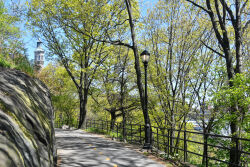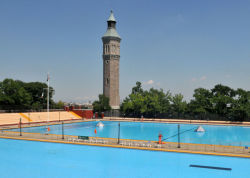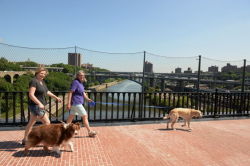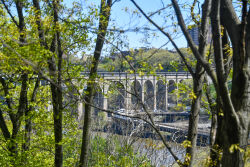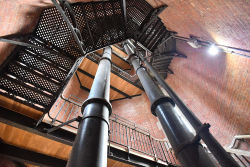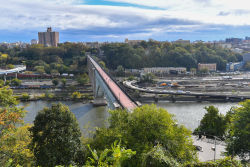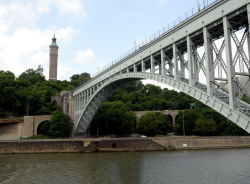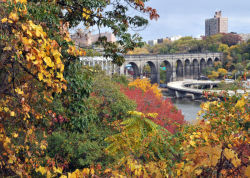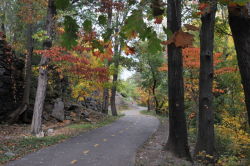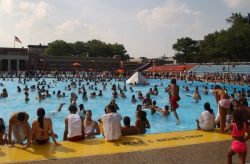Highbridge Park
Sugar Hill Luminaries Lawn
The rocky escarpment overlooking Harlem Valley forms the spine of northern Manhattan. Perched on this rise is the neighborhood of Sugar Hill, a part of Harlem that became home to many leading members of African American society during the first half of the 20th century. This triangular parcel of lawn located at the foot of Highbridge Park commemorates these luminaries.
Sugar Hill was named in the 1920s for the sweet life enjoyed by those who lived here. Loosely bounded by West 145th and 155th Streets and by Edgecombe and Amsterdam Avenues, the hill boasts neighborly streets and an eclectic range of late 19th- and early 20th-century architectural styles, but it is best known for the people who lived here. In the 1920s and ‘30s, an intellectual vanguard emerged within the African American community, and its base was Harlem. Those who could afford it – singers and musicians, political activists, authors, and painters – made their homes in the Sugar Hill area, which was distinguished by the accomplishments, affluence, and sophistication of its residents. The New Negro Movement of that time, later known as the Harlem Renaissance, was part of the intellectual fabric of this community, and Sugar Hill’s history is a reflection of that movement.
Residents included political reformers W.E.B. DuBois, founder of the National Association for the Advancement of Colored People (NAACP); Walter White, secretary of the NAACP; and the Reverend Adam Clayton Powell Sr. Musicians and performers such as Paul Robeson, Cab Calloway, Duke Ellington, and Billy Strayhorn also lived here. The field of arts and letters was represented by Langston Hughes, Ralph Ellison, Aaron Douglas, and William Stanley Braithwaite. Professionals included Thurgood Marshall, the first African American U.S. Supreme Court justice. Between the wars, these and many other luminaries created a unique sense of community on Sugar Hill.
The New York City Landmarks Preservation Commission designated several sections of Hamilton Heights/Sugar Hill as historic districts between 2000 and 2002. In 2002, Sugar Hill in its entirety was placed on the National Register of Historic Places.
In 2009, NYC Parks named this park feature Sugar Hill Luminaries Lawn in response to a request from a community group that was endorsed by Community Board 12 in Manhattan.
Check out your park's Vital Signs
Clean & Safe
Green & Resilient
Empowered & Engaged Users
Share your feedback or learn more about how this park is part of a
Vital Park System

